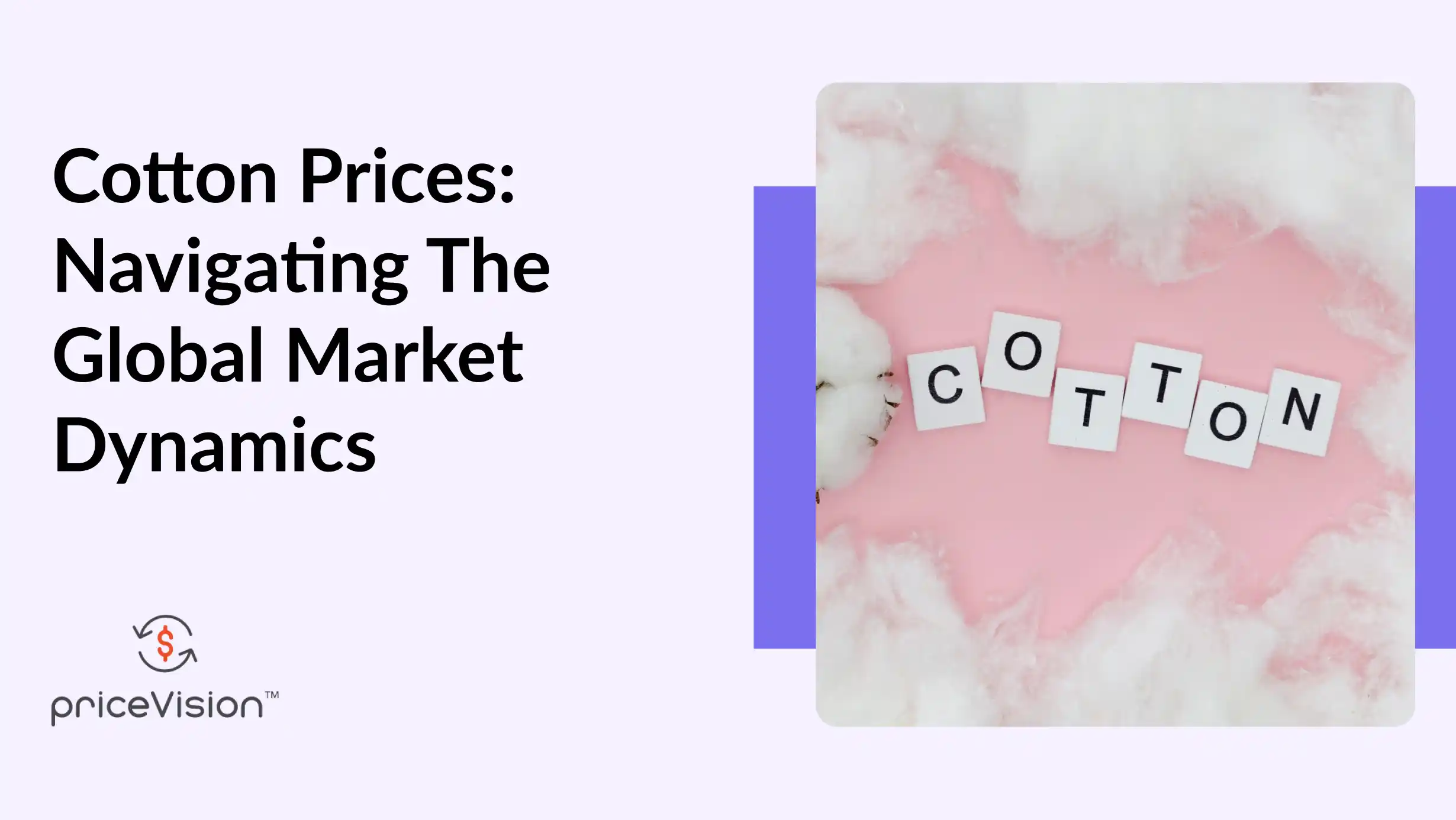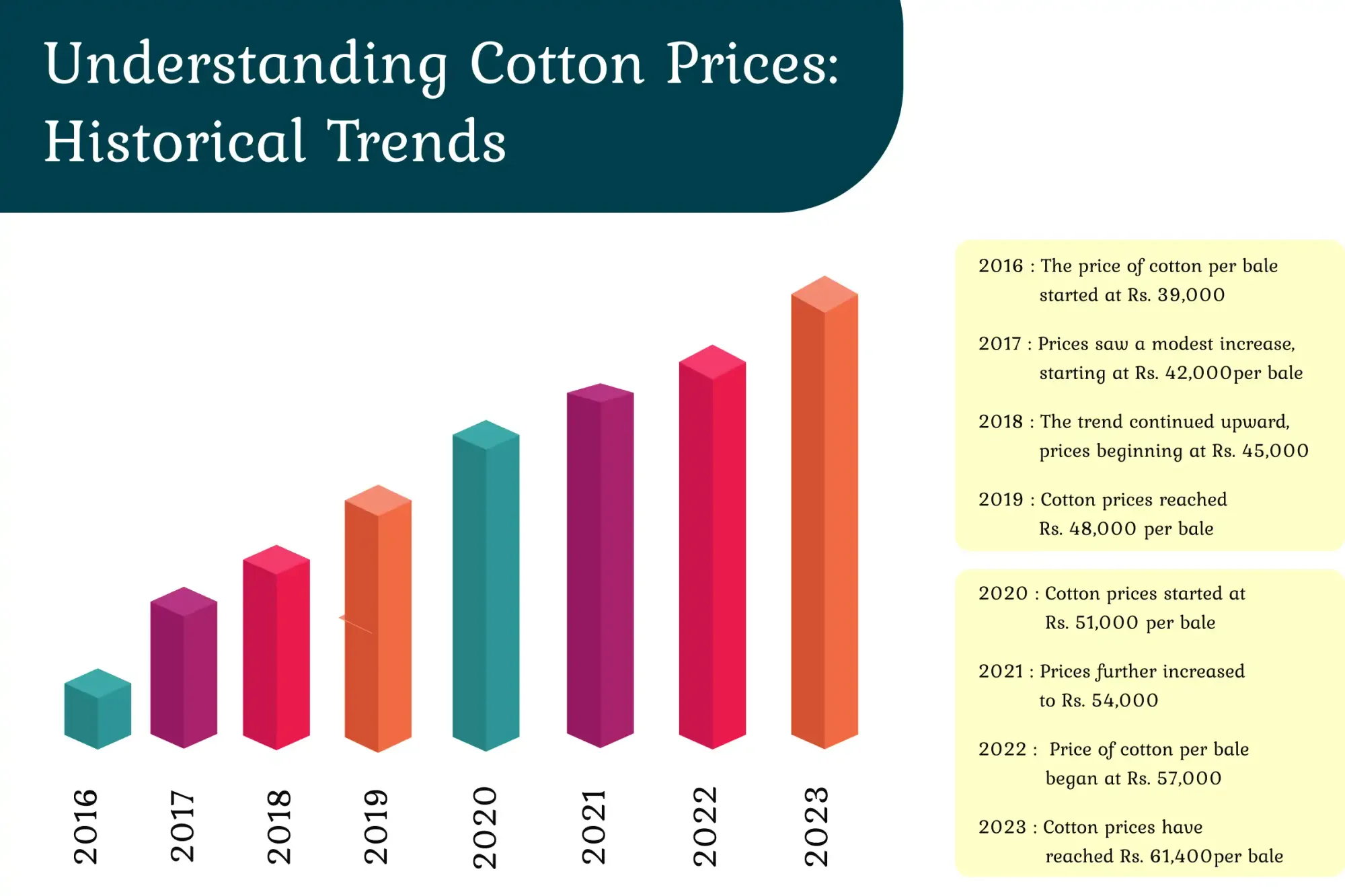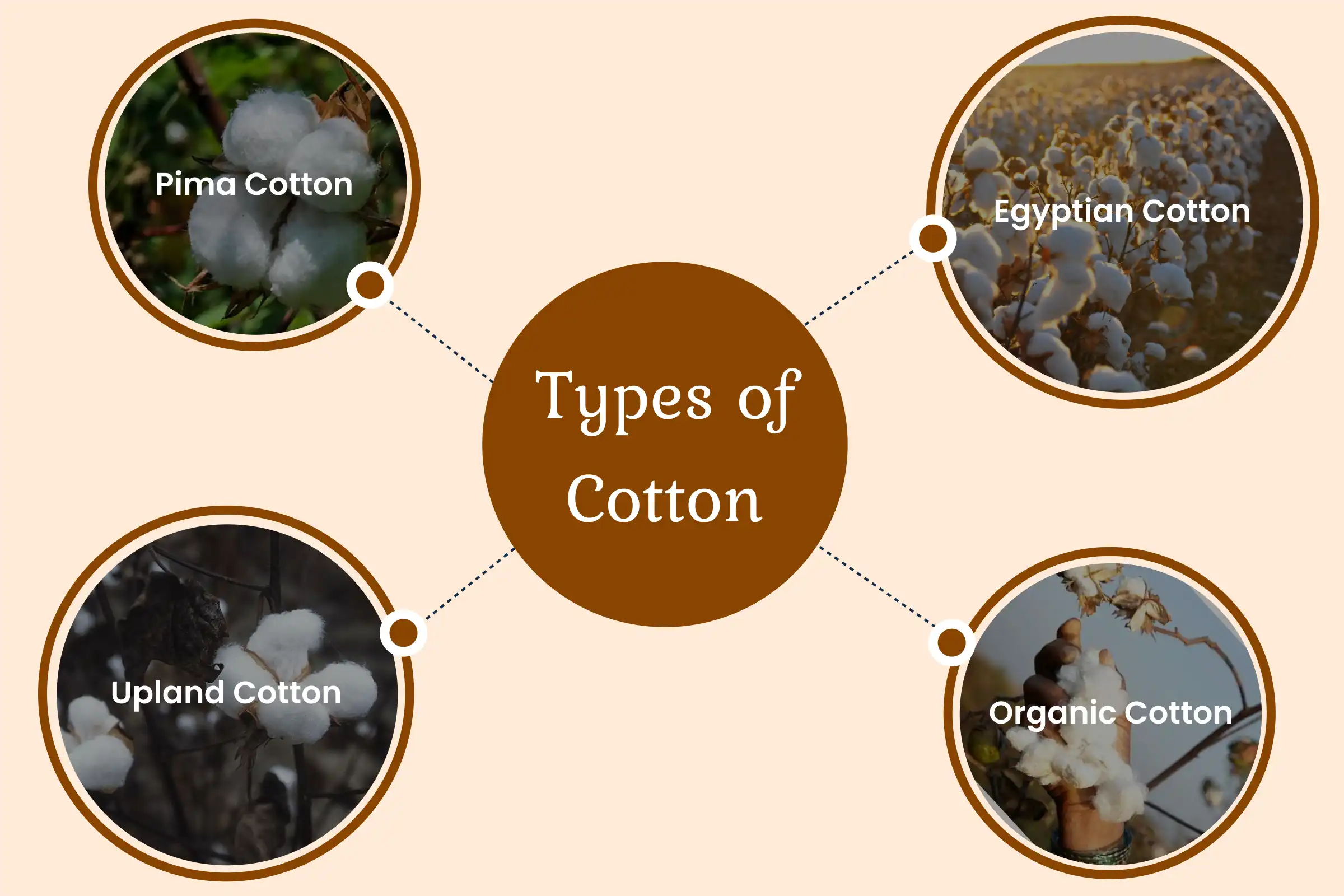Cotton Prices: Navigating the Global Market Dynamics

Cotton is a timeless and versatile material. It is essential in our daily lives. We wear soft cotton clothes and use cotton products. Cotton is crucial in many industries. However, it has complex market dynamics. Pricing trends in cotton are intricate.
The United States Department of Agriculture issued its December report. This is the World Agricultural Supply and Demand Estimates. It adds complexity to the situation. In comparison to the November projections, the research projects that worldwide cotton output for the 2023–2024 season will be 1.6 million bales lower due to the 1.0 million bale reduction rate in China. Countries like Texas, Mexico, and the United States are also down this year.
In this blog, we will discuss cotton. We focus on its uses and history. We also look at its pricing trends.
The Rich Historical Legacy of Cotton
Cotton is a textile fabric with a long history that stretches back to prehistoric times; it is more than simply a commodity. The cotton business has developed and grown across the world over the ages, becoming a vital component of the textile industry.
Originating from tropical and subtropical locations globally, cotton is a highly adaptable and extensively utilized crop. Its qualities are impressive. Softness, durability, and breathability stand out. These attributes mark its importance in textiles. They suit a range of garments. This includes elegant dresses and more. Also, it's ideal for comfy t-shirts and jeans.
Cotton seeds are a significant commodity in and of themselves, even outside of their usage as fabric. The result of crushing these seeds is cottonseed oil, which is employed as a feedstock for biodiesel and in the manufacturing of soap, cosmetics, and food. With such diverse applications, it's no wonder that cotton is a globally significant crop.
Understanding Cotton Prices: Historical Trends
Cotton prices have exhibited a noticeable upward trajectory over the past several years. To gain insight into these trends, let's take a look at historical cotton prices from 2016 to 2023:
To get Real-time price of cotton visit: PriceVision

● 2016: The price of Mcx cotton per bale started at Rs. 39,000.
● 2017: Cotton prices saw a modest increase, starting at Rs. 42,000 per bale.
● 2018: The trend continued upward, with cotton prices beginning at Rs. 45,000 per bale.
● 2019: Cotton prices reached Rs. 48,000 per bale.
● 2020: The upward trend continued as cotton prices started at Rs. 51,000 per bale.
● 2021: Prices further increased to Rs. 54,000 per bale.
● 2022: The price of cotton per bale began at Rs. 57,000.
● 2023 (Till Today): As of now, cotton prices have reached Rs. 61,400 per bale.
This historical data clearly reflects an upward trajectory in cotton prices. Several factors influence this trend. These include market dynamics, supply and demand, and economic indicators. They suggest potential future price increases.
The Versatility and Utility of Cotton
Cotton is an indispensable material with diverse applications across numerous industries. Here are some of the key ways in which cotton is used:
1. Apparel Industry
The textile industry uses cotton extensively to produce a variety of garment products, such as:
● Leisure Wear: Cotton is a great material for casual clothing since it is breathable and comfortable.
●Undergarments: It is great material for Undergarment as well. It has hypoallergenic qualities. It is also very supple.
● T-Shirts: Because of its comfort and adaptability, cotton t-shirts are a wardrobe must.
● Bed Linens: Cotton's breathability and comfort contribute to a good night's sleep.
● Comforters and Blankets: These items are often filled with cotton for warmth and comfort.
2. Baby Care and Feminine Care Products
The softness and hypoallergenic nature of cotton make it a common material in baby care and feminine care products, including:
● Diapers: High-quality diapers often feature cotton for comfort and absorbency.
● Baby Wipes: Cotton is gentle on sensitive baby skin.
● Hygiene Pads: These products utilize cotton for comfort and absorption.
● Panty Liners and Tampons: Cotton's softness makes it suitable for feminine hygiene products.
3. Cottonseed Oil
Cottonseed oil comes from crushed cotton seeds. It is used in different products, such as:
● Soap: Soap production often includes cottonseed oil. This ingredient is widely used.
● Cosmetics: It is utilized in cosmetics and skincare products.
● Margarine: Cottonseed oil is used in food products like margarine.
4. Agriculture and Industrial Applications
Cottonseed, in its various forms, finds application in diverse fields, including:
● Animal Feed: Cottonseed is used as animal feed in agriculture.
● Cotton Linters: A part of the cotton plant, cotton linters have applications in pharmaceuticals, rubber, and plastics.
5. Daily Use Products
Cotton is incorporated into various everyday items, such as:
● Coffee Filters: Cotton is used in coffee filter production.
● Book Binding: It is employed in bookbinding for strength and durability.
● Paper: Cotton is used in specialty paper production.
● Bandages: Cotton's softness and absorbency make it suitable for medical bandages.
6. Travel and Recreation Products
Cotton's versatility extends to travel and recreation items, including:
● Tents: Cotton is used in the construction of durable and weather-resistant tents.
● Fishing Nets: Cotton nets are commonly used in fishing.
● Ropes: Cotton ropes are favored for their strength and flexibility.
This diversity of applications underscores the integral role of cotton in our daily lives and various industries. It's not just a fabric; it's a versatile and essential material.
Types of Cotton
Cotton is categorized based on various characteristics, including staple, grade, and character. Here are four primary types of cotton, each with its unique attributes:

1. Pima Cotton
Pima cotton is renowned for having the longest and softest fibers globally. Originating from South America and the American Southwest, it is highly sought after for its resistance to fading, tearing, and wrinkling.
2. Egyptian Cotton
Egyptian cotton is very similar to Pima cotton, belonging to the same scientific class (Gossypium barbadense). It is also known for its durability and is grown in the Nile River Valley in Egypt.
3. Upland Cotton
Upland cotton constitutes about 90% of the world's cotton production. It has shorter fibers and is predominantly grown in Central America, Mexico, the Caribbean, and southern Florida.
4. Organic Cotton
Organic cotton is a natural fiber. It is grown without chemicals. This cotton comes from plants that are not genetically modified. It represents an environmentally friendly and sustainable approach to cotton cultivation.
These distinctions in cotton types cater to various needs and preferences within the textile and manufacturing industries. It's essential to choose the right type of cotton based on the intended use and desired characteristics.
Cotton Varieties in India
India ranks among the world's leading cotton producers. It provides diverse cotton types. Some of the notable varieties available in India include:
1. Ginned Cotton
● DCH-32
● Hampi
● R-51
● Suyodhar
● Varalakshmi
● Shanker 4 31mm Fine
● Shanker 6 (B) 30mm Fine
● J-34
● Jayadhar
● Krishna
● LRA
● MCU-7
● RCH-2
● Suyodhar
● Varalaxmi
● American
● Bramha
● Bunny
● Desi
● F-1054
● G-6
● GCH
● H-4(A) 27mm Fine
● H-6
● H.B
● H4
● MCU 5
● MECH-4
● N-44
● Narma BT Cotton
2. Unginned Cotton:
● 170-CO2
● Aka-1
● DCH-32
● H.B
● H.Y.4
3. 170-CO2 (Unginned)
This kind of cotton is cultivated in Telangana and offered for sale in Pitlam and Pudur marketplaces. This cultivar costs between Rs. 7,000 and Rs. 8,000 per quintal.
4. American
Farmers in Rajasthan cultivate and sell this type of cotton in Suratgarh and Hanumangarh marketplaces. This cultivar costs between Rs. 7,650 and Rs. 7,761 per quintal.
5. LRA
Grown in Tamil Nadu, this kind of cotton is available for purchase in markets like Usilampatti. This cultivar costs between Rs. 6,300 and Rs. 6,400 per quintal.
6. Cotton (Unginned)
This variety is grown in various states such as Telangana, Gujarat, and Andhra Pradesh and is sold in markets such as Enkoor, Halvad, and Jammikunta.This cultivar costs between Rs. 6,380 and Rs. 7,400 per quintal.
7. MCU 5
This variety of cotton is grown in Tamil Nadu and is sold in markets such as Usilampatti. This cultivar costs between Rs. 6,200 and Rs. 6,300 per quintal.
8. Other
This group covers a variety of cotton varieties cultivated in areas including Tamil Nadu, Gujarat, and Andhra Pradesh. Depending on the kind and market, this variety might cost anywhere from Rs. 5,400 and Rs. 8,190 per quintal.
Understanding India's cotton varieties is essential. It aids farmers, traders, and manufacturers. They can choose suitable cotton for their needs. This selection is important for their specific applications. Each variety has its unique characteristics and price range, which can impact decision-making in the cotton industry.
MCX Cotton Price in Detail
MCX cotton, a commodity traded on the Multi Commodity Exchange in India, operates within the framework of supply and demand dynamics. The price of MCX cotton is primarily influenced by the equilibrium between these forces. When MCX cotton demand exceeds supply, prices tend to increase. Conversely, when supply is greater than demand, prices often decrease.
Several factors can affect the price of MCX cotton, including weather patterns, crop yields, and global production levels. However, the foundational driver remains the balance between demand and supply in the market.
Here are some of the key factors that influence MCX cotton prices:
1. Domestic Demand-Supply Scenario:
Demand for cotton in the domestic market is driven by factors such as population, income levels, fashion trends, and the performance of the textile industry.
Supply of cotton depends on variables like the area under cultivation, crop yield, and production capacity.
2. Inter-Crop Price Parity:
Prices of other crops cultivated in the same regions as cotton can impact MCX cotton prices. If soybean prices surpass cotton, farmers may favor soybeans. This could decrease cotton availability, likely increasing its cost.
3. Cost of Production:
The production cost of cotton impacts its price. This cost includes fertilizers, labor, and transportation. Rising production costs may lead to higher cotton prices to compensate for these expenses.
4. International Price Situation:
As a globally traded commodity, cotton prices are significantly influenced by the international market situation.
Factors like supply-demand dynamics, currency fluctuations, and trade policies of major cotton-producing and consuming countries can have a profound impact on cotton prices.
5. Biotic Factors and Climate:
The yield and quality of cotton are highly susceptible to weather conditions, pest infestations, and disease outbreaks. Unfavorable weather or pest-related issues can lead to reduced cotton supply, resulting in higher prices.
6. Government Policies:
Government policies related to import-export, subsidies, and minimum support prices can significantly impact cotton prices.
The minimum support price, which is the price at which the government purchases crops from farmers, plays a critical role. Any alteration in this price can have ripple effects on cotton prices.
7. Correlation with Cotton Yarn Prices:
The cost of cotton yarn connects tightly with raw cotton prices. Each influences the other significantly. This relationship exists because cotton yarn is a primary product derived from cotton, and any change in raw cotton prices can influence cotton yarn prices.
8. Global Trade:
Cotton is a globally traded commodity, with approximately 30% of the global cotton produced being traded.
Additionally, cotton is indirectly traded in various forms, including yarn, fabric, and clothing. As a result, global trade policies, supply-demand dynamics, and currency fluctuations can significantly impact cotton prices.
Bottom Line
In conclusion, the cotton market has recently seen a significant drop in prices due to a potential surplus in global production and increased cotton crops in countries like China, Brazil, Argentina, and Tanzania. The United States Department of Agriculture (USDA) has updated its global cotton production estimates, adding to the complexity of the situation.
Cotton, with its rich historical legacy, remains an essential material with diverse applications in various industries, from apparel to agriculture. It comes in various types, each catering to specific needs within the textile and manufacturing sectors, making it crucial to understand the distinctions.
In India, the MCX cotton market is influenced by factors such as domestic demand and supply, inter-crop price parity, production costs, international market dynamics, weather conditions, government policies, and its correlation with cotton yarn prices. Global trade also plays a significant role in shaping cotton prices. Staying informed and adaptable is key for success in the ever-evolving cotton market.
FAQ
1. What is the meaning of MCX cotton?
MCX Cotton refers to the cotton futures traded on the Multi Commodity Exchange (MCX), enabling stakeholders to track the MCX Cotton price and hedge against market risks.
2. What is the price of cotton in India today?
The MCX Cotton price varies daily depending on market conditions. Platforms like PriceVision provide real-time insights and accurate updates on cotton prices.